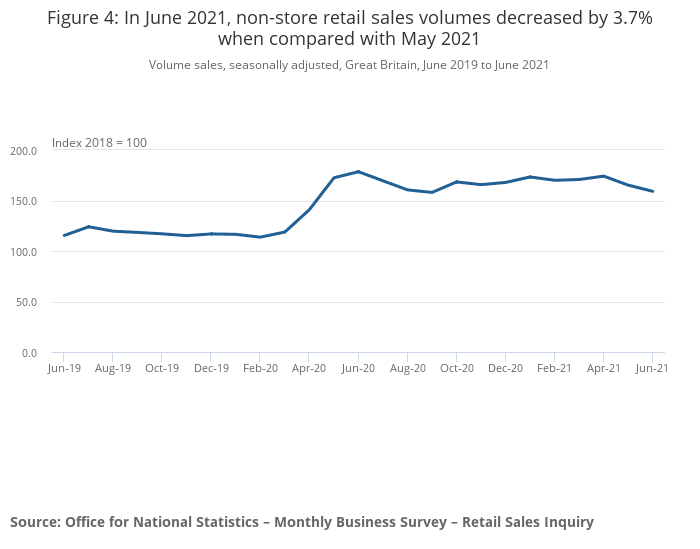Mobile ecommerce and mobile payments are on the rise, but could digital wallets be the key to a future dominated by mcommerce? Early responses to Apple Pay suggests so; with Google Wallet, PayPal, Amazon Payments, and more, gaining traction in this space.
But could mobile payments and digital wallets really revolutionise the future of how we shop on mobile devices, and in retail stores? Or will it be the next fad to fade into obscurity?
What is a digital wallet?
Consider how you’d use a real wallet. When shopping, you take out your wallet upon checkout, to reveal your credit card information to the machine. It’s not too difficult, but when we have a smartphone in our pocket, why not utilise that? Why should we need to carry plastic cards and paper bills around anymore?
A digital wallet is essentially the same, but instead of pulling out your credit card to make a transaction, you use your phone, with the corresponding app containing your banking details. This uses NFC (near field communication) technology, found in mobile phones, and other mobile devices. This means you can simply wave your phone near a terminal, and voilà; you have paid your bill. Pretty nifty.

Some of the most prevalent services are as follows:
Similar to the digital wallet, mobile payments from these companies act as the middle ground between you and your bank. You can pay for any items online, from any device, with a swift click or tap of a button. No more long details to fill in, and no need for numerous accounts around the web. You’ve most likely already seen numerous examples of “Pay with PayPal”, and this trend is set to continue, so could this be the future of mcommerce?
What’s the deal with Apple Pay, Google Wallet, PayPal, and all the other digital wallets?
Google Wallet was launched in September 2011, so it’s been around some time now. But without mass adoption by the public, it hasn’t really gotten anywhere.
To make use of Google Wallet, you link your debit or credit card to your Google account, which is then tied to an app on your phone. However, it is currently only available in the US, although this is likely to spread elsewhere soon.
Upon launching the iPhone 6, 6 Plus, and the Apple Watch, Apple also announced Apple Pay; a new and improved version of their digital wallet. This allows you to use NFC technology to pay with your iPhone, and even your Apple smartwatch; because who didn’t envision a day where they could pay at a checkout with their watch?
As ever, Apple manage to create a craze around their latest release, so essentially, Apple Pay could be what it takes to propel mobile payments into the limelight. It may also mean that competitors will need to shift their services up a gear, to ensure they aren’t left in the dust by Apple, or anyone else. Essentially, this could be the spark that was needed to change the industry.
The PayPal app also works as a digital wallet. In fact, they are marketing it as such, instructing consumers to “use our app like a wallet to pay at the till, from your table or from around the corner”. PayPal is already widely used, so it has a good head start on the competition; although Google and Apple have the advantage of building their software into smartphones that support mobile payments.
How is it secure?
Apple has touch ID, for biometric security. This uses fingerprint recognition, for an easier and secure transaction at point of sales.
Apple also makes use of tokenization, meaning the credit card number powering the transaction is masked, and uses a randomly generated number for added security. These are one-use only, and or are specific to transactions, which should keep hackers at bay. Merchants will also not need to store so many card numbers safely.
Google however, uses a cloud-based tokenization process, with payment data stored on Google’s servers instead of on the device. This opens up a new can of worms for consumers to be worried about security, yet this is unlikely to be a security risk.
Apple’s Touch ID could be the killer trick here, as holding out an iPhone and paying by only holding your finger on the sensor is very fast. Unlocking your phone and entering a PIN however, is not dramatically faster, and many consumers will not see the benefit. Perhaps we will soon see more Android devices with fingerprint scanners for this reason.
Is it private?
Privacy has become a major issue in recent times, with Apple’s iCloud hacks damaging their reputation of security. Will this impact how many people adopt Apple Pay? Quite possibly. Would they be right to avoid digital wallets because of this breach? Probably not, but it demonstrates there are still concerns and hurdles that huge companies like Apple must first overcome, and then prove to consumers.
Apple did have a sly dig at Google when it comes to privacy, claiming “Apple doesn’t know what you bought”; whereas Google most likely does, as they collect data through search results.
What are the barriers to mass adoption?
Essentially, Google Wallet’s growth has been inhibited by the carriers, rather than the technology behind it. Google have always been ahead with the trends, so maybe now is the right time to fully exploit mobile technology for payments.
Alongside this, credit card companies are hesitant to support technology that could help competitors. So it’s a matter of adoption from businesses and end users that will determine the future of mobile payments and digital wallets.
However, Apple Pay has many, many partners, including important payment networks, and 6 card-issuing banks. These include:
- Visa
- MasterCard
- JPMorgan Chase
- Wells Fargo
- American Express
- Bank of America
- Capital One
- Citi
Instead, Google only had Citi as a card issuer partner, although it does not have MasterCard, Visa, and American Express as partners. Yet this is likely to expand with the new surge of curiosity behind the technology.
Other barriers include incompatible mobile websites on small screens, meaning customers are frustrated they cannot shop on their phone or tablet. If a customer cannot use a business’s website, then how can they be expected to pay on their mobile? Responsive web design has never been more important. For more information, read our blog here:
Why Responsive Web Design is the Best Option for Business going Mobile
If customers can shop online, then it’s simply a matter of ensuring consumers understand the technology. The public will need to understand how it works, that it’s completely safe, and that there are significant benefits to utilising digital wallets. Once this is understood, and consumers are given a reason to use it, it’s sure to take off.
Is this really the future of mobile ecommerce?
With a rise of digital wallets and mobile payments, comes a world where mobile sales will increase dramatically, with an easier path to purchase items.
It will simply take touch hit of a button to pay with your desired mobile payment system, rather than inputting credit card details laboriously in a long form. And with more people purchasing products on the go, this is a brighter future for all. Whether that button will be predominantly “Pay with Google Wallet” or “Pay with Apple Pay” or “Pay with PayPal”, or whatever other iteration becomes dominant, is yet to be seen.
For now, Apple Pay is limited to Apple-approved merchants, such as McDonalds, Nike, and Groupon, but this is likely to expand in the near future. It’s safe to say, that mobile websites are an increasingly crucial part of any digital marketing strategy, and the growing momentum behind mobile ecommerce will continue on.
The iBeacon, or proximity systems, combined with mobile payments and digital wallets, could be what really alters the landscape of retail stores. For more information, read our blog below:
What iBeacon Means for Digital Marketing and Ecommerce in the Future
How will digital wallets and mobile payments evolve?
If you think about it, your wallet is more than just a credit card. It’s your ID, your vouchers, and other important details. Keep an eye out for more and more non-payment capabilities within digital wallets in the future, as their capabilities will expand to replace your wallet entirely.
Samsung Wallet already allows vouchers and memberships in one handy place. Content can also be saved to Google Wallet, such as any supported loyalty cards and offers, using Google Wallet Objects.
QR codes may not be used heavily, but Apple have a Passbook scanner, allowing to you receive content in your digital wallet by scanning a code. You can scan 2D barcodes in order to gain information on loyalty cards and coupons. This blends the worlds of online and offline marketing, and could be an interesting piece of tech to watch in the future. You can get location and time-based notifications, using iBeacon technology, to use a loyalty card when you’re near a business, or use a voucher when it’s nearly run out.
PayPal allows mobile transactions to other users in an incredibly simple way, and view all your transactions easily. PayPal are also expanding into mobile payments with a card reader, utilising the PayPal Here app, allowing anyone to get paid on the move. You can simply accept card payments on your mobile, with this very simple app. And as PayPal is already one of the most widespread digital platforms when it comes to transactions, it’s likely to be a hit.
What are your thoughts on digital wallets and mobile payments? Would you switch to using a digital wallet just yet? Leave your thoughts and comments below, and if you have any further questions, contact us, or send us a Tweet over at @XanthosDigital








